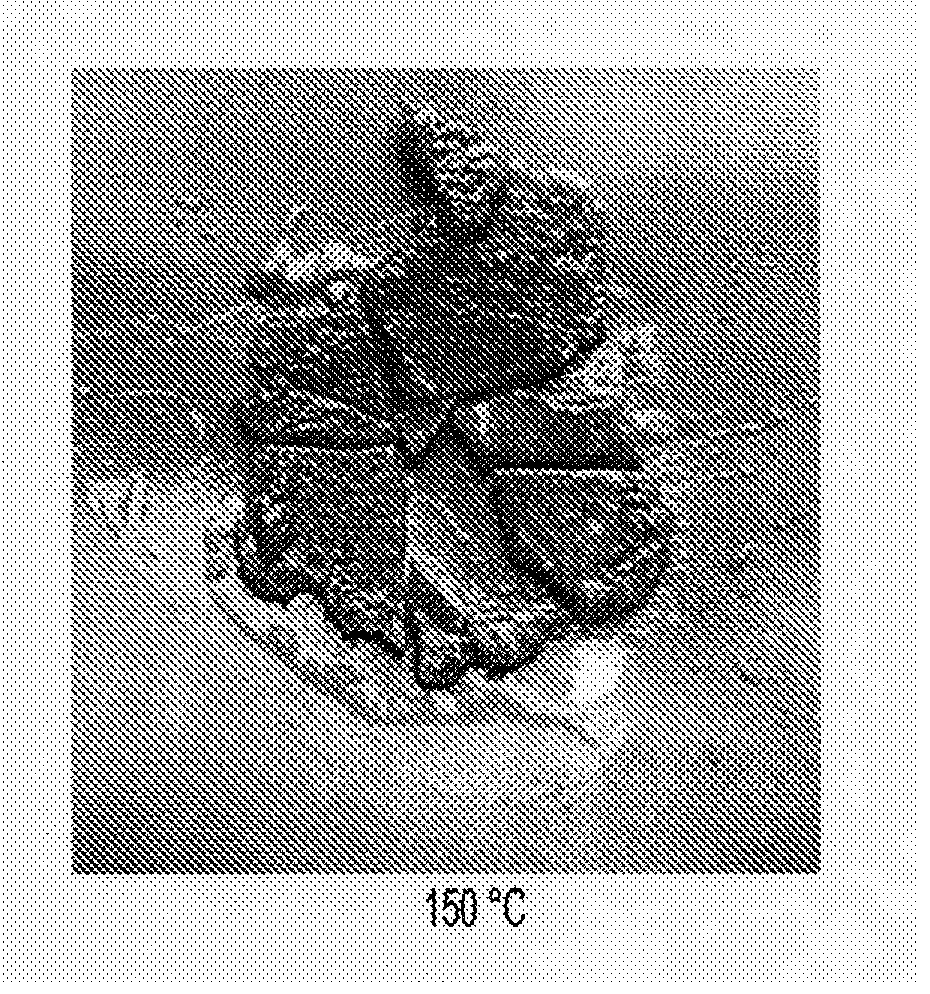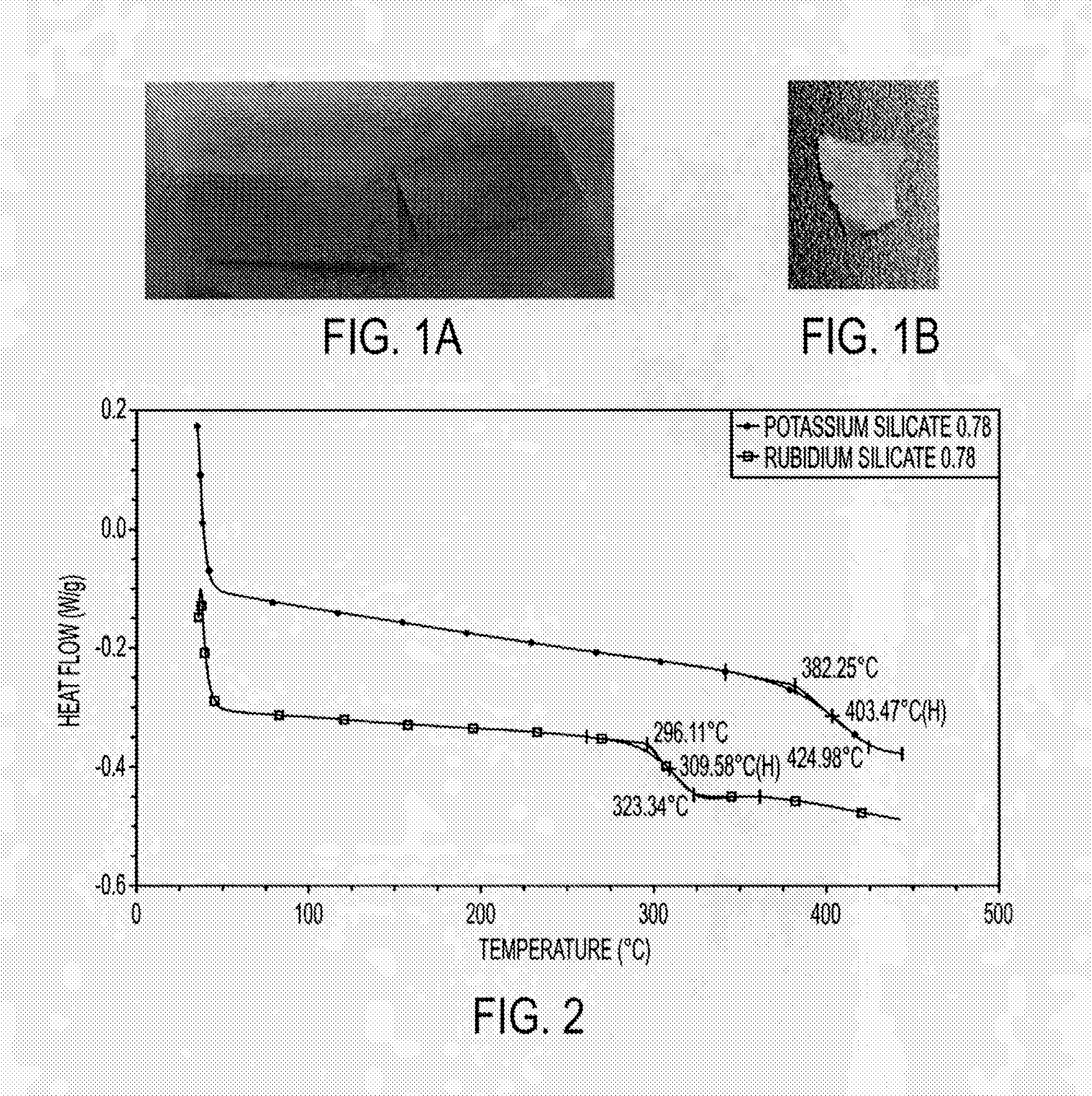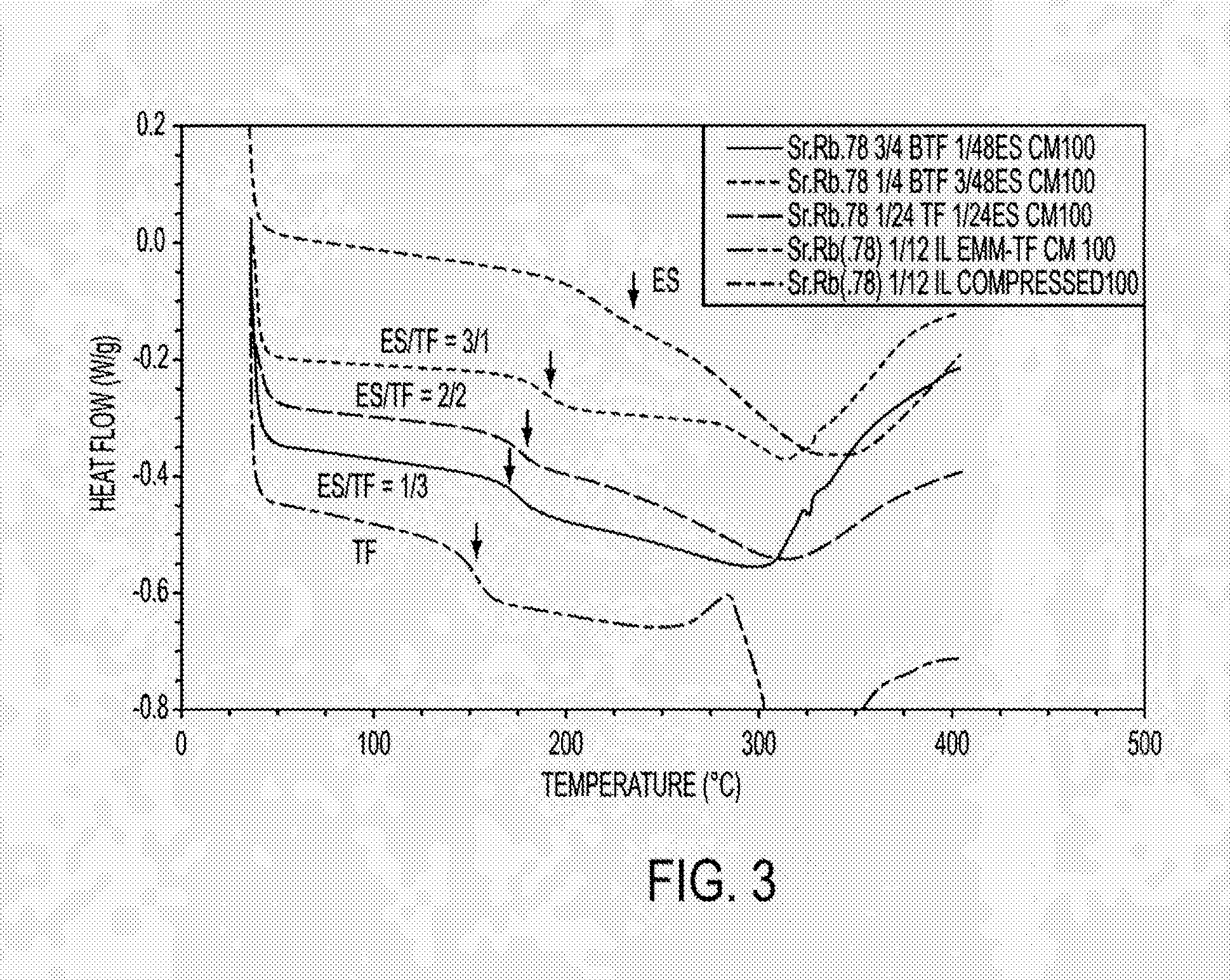Inorganic Ionomers Made From Minerals
a technology of inorganic ionomers and minerals, applied in the field of inorganic ionomers, can solve the problems of toxic chemicals produced upon degradation, poor chemical and thermal resistance, drawbacks to be overcome, etc., and achieve the effect of increasing the free volume of polymers
- Summary
- Abstract
- Description
- Claims
- Application Information
AI Technical Summary
Benefits of technology
Problems solved by technology
Method used
Image
Examples
example 1
[0088]Silicate (SiO2) was mixed with cesium carbonate (Cs2CO3) and heated (500-1000° C.) in a crucible to make cesium metasilicate glass, which is water soluble and has low softening temperature. The so-produced polymer was ground and mixed with solid ionic liquid (IL: either 1-butyl-3-methylimidazolium hexafluorophosphate or 1-ethyl-3-methylimidazolium ethyl sulfate). The resulting mixture was a powder form. Then, the mixture was heated in a crucible at the temperature above the softening temperature, when the softening temperature was rather low (approximately 300° C.). The resulting material was processed to a desired shape by compression molding or injection molding.
[0089]Alternatively, the ionic polymers were dissolved in water and IL was added under stirring. After evaporation of water, bulk material was ground to a powder form. The powder was processed to a desired shape by injection molding or compression molding.
example 2
[0090]Phosphoric acid (H3PO4) and sodium phosphate (NaH2PO4) were mixed and heated in a crucible at high temperature (over 1000° C.), where condensation reaction occurred. The ionic content was adjusted by changing the ratio of component monomers. CaO was added at melt to introduce divalent bonds as ionic cross-links to produce harder plastics. The resulting polymer was ground and mixed with IL (either 1-butyl-3-methylimidazolium hexafluorophosphate or 1-ethyl-3-methylimidazolium ethyl sulfate). The resulting mixture was a powder form. Then, the mixture was heated in a crucible at the temperature above the softening temperature when the softening temperature was rather low (approximately 300° C.). The resulting material was processed to a desired shape by compression molding or injection molding.
[0091]Alternatively, the ionic polymers were dissolved in water and IL was added under stirring. After evaporation of water, bulk material was ground to a powder form. The powder was process...
example 3
Melt Polymerization
[0092]Polymerization was conducted in the melt state. Phosphoric acid (H3PO4) and sodium phosphate (NaH2PO4) were mixed and heated in a crucible at high temperature (500-1000° C.), where condensation reaction occurred. When incomplete polymerization occurred, chain length (molecular weight) were reduced. Thus, the chain length was controllable.
[0093]In another example, SiO2 was mixed with Cs2CO3 with the ratio of [SiO2] / [Cs2CO3]=1 and heated in a crucible at high temperature, producing polysilicates. The time of heating was adjusted to control the degree of polymerization. By increasing the purity of monomers, molecular weights were increased as in normal condensation polymerization.
PUM
| Property | Measurement | Unit |
|---|---|---|
| glass transition temperature | aaaaa | aaaaa |
| glass transition temperature | aaaaa | aaaaa |
| temperature | aaaaa | aaaaa |
Abstract
Description
Claims
Application Information
 Login to View More
Login to View More - R&D
- Intellectual Property
- Life Sciences
- Materials
- Tech Scout
- Unparalleled Data Quality
- Higher Quality Content
- 60% Fewer Hallucinations
Browse by: Latest US Patents, China's latest patents, Technical Efficacy Thesaurus, Application Domain, Technology Topic, Popular Technical Reports.
© 2025 PatSnap. All rights reserved.Legal|Privacy policy|Modern Slavery Act Transparency Statement|Sitemap|About US| Contact US: help@patsnap.com



